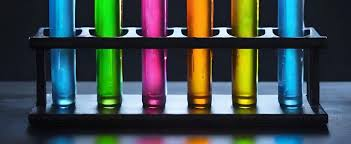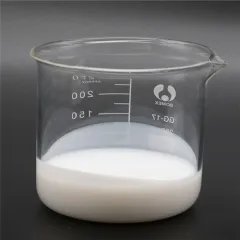Commonly made use of additives in plastic shade matching include dispersants, lubricating substances, diffusion oils, combining agents, compatibilizers, and so on. Frequently experienced material ingredients include flame retardants, strengthening agents, brighteners, UV inhibitors, antioxidants, antibacterial agents, antistatic representatives, etc. The most usual ones are fillers for expense reduction or physical adjustment, such as light calcium carbonate, hefty calcium carbonate, talc, mica, kaolin, silica, titanium dioxide, red mud, fly ash, diatomaceous earth, wollastonite, glass beads, barium sulfate, calcium sulfate, etc, in addition to organic fillers, such as timber flour, corn starch, and various other farming and forestry spin-offs. Filling and reinforcing materials consist of glass fiber, carbon fiber, asbestos fiber, artificial natural fiber, and so on
Intend the above ingredients are contributed to the item’s raw materials. In that situation, they have to be added to the resin resources in the very same proportion in the color-matching proofing so as not to generate a color difference in the succeeding production.
(Additives for Plastic Color Matching)
Dispersant
Dispersant types include fat polyurea, hydroxy stearate, polyurethane, oligomeric soap, etc
At present, the generally used dispersant in the industry is lube. Lubes have great dispersibility and can also boost the fluidity and demolding performance of plastics throughout molding.
Lubes are divided right into inner lubricants and outside lubricants. Inner lubes have a specific compatibility with resins, which can minimize the cohesion between resin molecular chains, lower melt viscosity, and boost fluidity. Exterior lubes have inadequate compatibility with resins. They comply with the surface of molten resins to develop a lubricating molecular layer, thus minimizing the rubbing between resins and processing equipment.
Lubricants
According to the chemical framework, they are generally separated right into hydrocarbons, steel soaps, lubricants that play a demolding function, fats, fatty acid amides, and esters.
Such as plastic bis ceramide (EBS)
EBS (Ethylene Bis Stearamide), also called vinyl bis stearamide, is a very reliable internal and exterior lube and dispersant widely used in the plastic processing sector. It appropriates for all thermoplastic and thermosetting plastics, consisting of however not limited to polyethylene (PE), polypropylene (PP), polystyrene (PS), polycarbonate (PC), polyamide (), polyester (PET/PBT), polyurethane (PU), phenolic material, epoxy material, and so on. Here are a few of the primary functions of EBS in these plastics:
(EBS Ethylene Bis Stearamide Emulsion)
Diffusion
As a dispersant, EBS can help evenly spread fillers and pigments during plastic handling, avoid agglomeration, and improve the dispersion and stability of pigments and fillers. This aids enhance the shade harmony and mechanical residential or commercial properties of the final product. For instance, in masterbatch manufacturing, EBS can ensure that pigment bits are evenly dispersed in the carrier resin to make sure that consistent shade is displayed in succeeding plastic items.
Inner lubrication
In the plastic thaw, EBS can reduce the friction between particles and the shear tension of the plastic melt, consequently minimizing the thaw viscosity and making the thaw circulation smoother. This helps in reducing pressure throughout extrusion or shot molding, lowers processing temperature levels, and reduces molding cycles, while additionally minimizing energy usage, enhancing processing effectiveness, and improving the service life of equipment.
External lubrication
EBS forms a slim lubricating film on the plastic surface, which can reduce the rubbing in between the plastic thaw and the metal mold and mildew, improve demolding performance, and stop sticking of plastic products throughout molding. This not just helps to boost the surface coating of the item and lower problems however additionally simplifies the post-processing process and improves production effectiveness.
Other functions
Along with the above major features, EBS can also be utilized as an antistatic agent to enhance the antistatic homes of plastic items and minimize problems such as dirt adsorption brought on by static electricity. In some applications, EBS can likewise enhance the climate resistance and chemical resistance of plastic items.
In the shot molding process, when dry coloring is utilized, surface therapy agents such as white mineral oil and diffusion oil are usually included during blending to play the function of adsorption, lubrication, diffusion, and demolding. When changing the color, it needs to additionally be contributed to the raw products in proportion. Initially, add the surface area treatment agent and tremble well, after that include the color powder and shake well.
When picking, the temperature resistance of the dispersant ought to be identified according to the molding temperature of the plastic raw material. From an expense point of view, in principle, if a medium and low-temperature dispersant can be utilized, a high-temperature resistant one ought to not be selected. High-temperature dispersants require to be immune to more than 250 ┬░ C.
Provider of EBS Ethylene Bis Stearamide Solution
TRUNNANO is a supplier of 3D Printing Materials with over 12 years experience in nano-building energy conservation and nanotechnology development. It accepts payment via Credit Card, T/T, West Union and Paypal. Trunnano will ship the goods to customers overseas through FedEx, DHL, by air, or by sea. If you want to know more about EBS Emulsion, please feel free to contact us and send an inquiry.
Inquiry us

